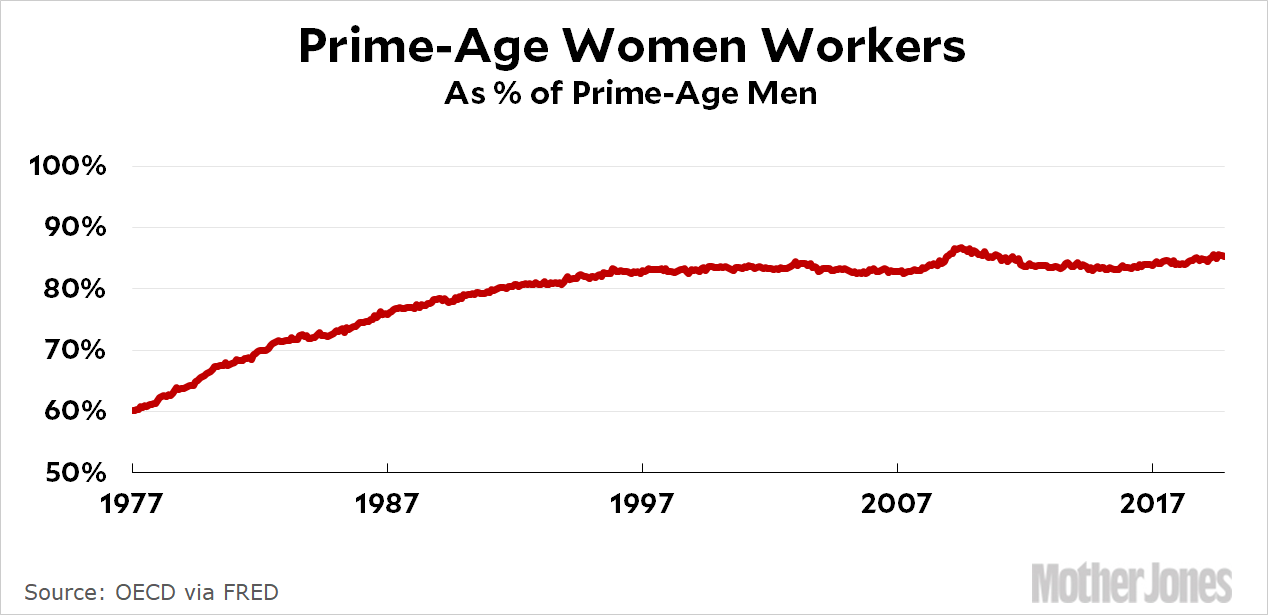Whenever I hear the phrase “prime age workers” I have a hard time not thinking of cattle stockyards. But that’s just me. All it really refers to is workers aged 25-54, those who are in the “prime” of their working years. It’s a useful construct because it eliminates things like kids who are in college and older adults who perhaps retire at different rates. The assumption is that between the ages of 25-54, basically everyone who wants to work is available to work. That makes it a good metric for analyzing the labor force.
This popped into my brain after reading the dozenth story about how there are now more women in the workforce than men. In particular, women made up 50.04 percent of the workforce in the most recent count. But that includes everyone, and there are some other statistical artifacts that creep into this as well. A better way of looking at this is the percentage of prime-age working women as a ratio of the percentage of prime-age working men. Here it is:

If prime-age men and women were working at the same rate, this ratio would be 100 percent. In reality it’s only 85 percent. That’s up a lot—really a lot—over the past 40 years, but it’s still well below even. Among prime-age workers, the share of men working is still considerably more than the share of women working.

















